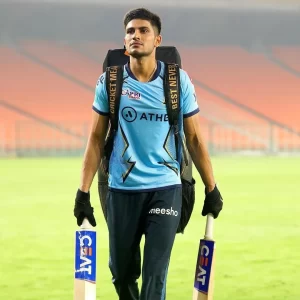With Tests being the pinnacle of the game and T20 being the latest to capture the imagination of the spectators, where does that leave ODI cricket? There are growing chorus for ODI cricket to be scrapped altogether and keep it as a World Cup only event. Various cricketers have given lots of suggestions to change the way ODI is played. All of these stemmed from the success of T20 cricket and the blossoming of franchise cricket the worldover. There are also suggestions to quietly bid goodbye to the format that has kept the coffers of every board full. Let me try to analyse in should and can ODI survive?
ODI cricket came into the cricketing calendar through an accident. In 1971, the Ashes Test between England and Australia was constantly hampered because of rain. Most of the days were either completely washed out or little play was possible. The weather cleared on the final day and as a result, both the teams decided to play 40-overs-a-side game. A draw was out of the context because the side batting second must go past the first innings score. Australia won that game but little would the players and the spectators thought that they were part of something historical.
History of the format
A format that was born under such circumstances, eventually overtook its much fancied parent, Test Cricket. The World Cup followed 4 years later and has been repeated every 4 years over the last 50 years. Back in the day, when Test cricket was ruling the roost, ODI was more of an afterthought. There were hardly handful of nations to play the sport. It is still the same but the Australian business tycoon, Kerry Packer, changed the way the game is played and watched. The introduction of colour clothing, white ball, cricket under the lights, field restrictions took the game by storm and from then on, ODI marched from strength to strength.
If Kerry Packer’s was the second revolution in the game, India’s unbelievable and unexpected 1983 World Cup win boosted the game beyond anyone’s imagination. Cricket which was widely followed by the Indians even at the point, went up by several notches and it consumed the time of the Indians in particular. That was followed by the first ever ODI World Cup to be held outside of England in 1987.
ODI became a cash cow for all the boards in the world. More and more games were scheduled. There was an insane period once satellite television transmitted every game played everywhere directly into the living rooms of Indians, there was inevitably 3-4 tournaments held every year. Sharjah, with its benevolent purse, jumped into the bandwagon by organising atleast a couple of tournaments in the desert with India vs Pakistan being the main attraction.
Madness of meaningless tournaments
Not to be left behind, Indian board organised a whole host of meaningless 3-nations, 4-nations tournament. It became so bad that the Indians seamlessly blended from one tournament to another. Things came to such a pass that the ICC had to put its foot down and restricted such tournaments. Nevertheless, all these games helped every board in every possible to way. If not all, atleast some of the boards were able to pay their players exorbitant match fees and contracts. One will have to look at the Indian television to understand the enormous money that poured into the board.
Advertisement at the end of every over, sometimes, even before the last delivery of the over was bowled. There were lots and lots of adverts throughout a 7-hour period. This is something neither T20 nor Test cricket will ever be able to reproduce. T20 because of the length of the game being too short for the board’s liking and Test cricket because of the lack of patronage for the format.
ODIs started to lose their lustre
However, despite these, ODIs became stale as years rolled by. The format became predictable. There was and is an absolute lack of interest during the middle stage of the game where teams are happy to push for singles and bowlers happy to restrict the scoring. No effort was made to play aggressive cricket, either with the bat or with the ball. Growing number of players have opted to retire from ODI to concentrate on Tests and T20. There were lot of suggestions to improve the format. Former players advocated for a reduction from 50 to 40 overs.
Ravi Shastri opined, “For One Day cricket to survive, I think it should be reduced to forty over game in future and the reason I say this is because when we won the World cup in 1983, it was a 60 over game. Then the attention span of the people diminished and it became a fifty over game. I think the time has come for it to become now a 40 over game. Evolve with the times. Reduce the format.”
Finch, Khawaja and Zampa are all of the same opinion. Tendulkar, however, went one step further and wanted ODI to be treated like 2 innings of 25 overs each thereby blending both Tests and T20 in one. None of them found any traction and I am afraid, the ICC will not take a stance on this.
Wrapping up should and can ODI cricket survive?
However, despite all these, the fact remains that ODI is the format on which every board thrives. The revenue from an important ODI can easily surpass that of a T20 or Test cricket. The advent of T20 took the focus away mainly from Test cricket but everyone likes to believe that it is ODI that is at a loss. Tests being the pinnacle of the game, administrators will ensure its survival and players will want to test themselves at the highest form of the game. There is no problem in that but 3 formats cannot survive. It is overkill for both the players and the spectators.
The time has come to take a decision. Should ODI cricket be allowed to survive? The answer is, maybe. There are far too many instances when teams from Australia or New Zealand have travelled to England or Asia to play a series of white-ball games which has no bearing on anything and vice versa. The game must come back to the 2 format playbook. Tests and T20 or Tests and ODI with T20 strictly restricted to franchise cricket. International T20 will not be allowed as well as World T20. ICC will incur a loss but if a part of the revenue from all the leagues are given to the ICC, the resultant loss from a lack of World T20 can be offset.
Other related blogs can be read here, here, here, here, here, here, here, here and here



